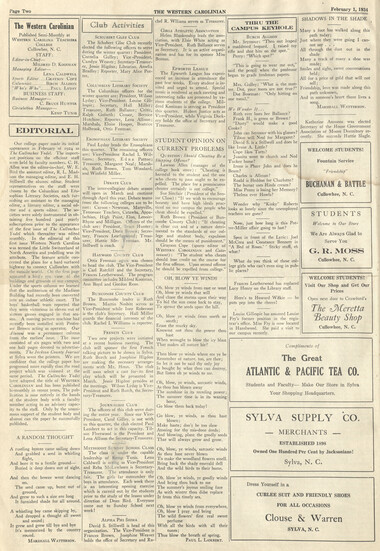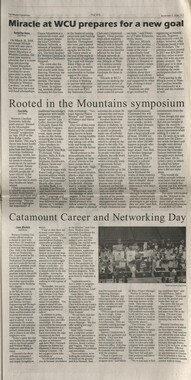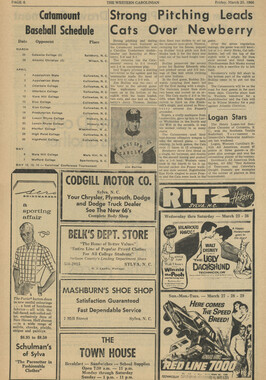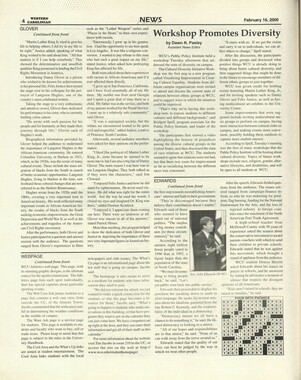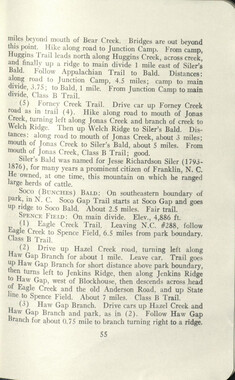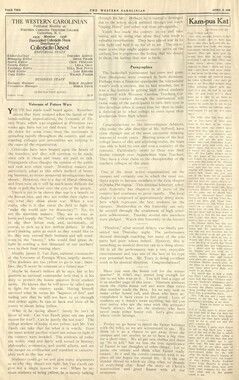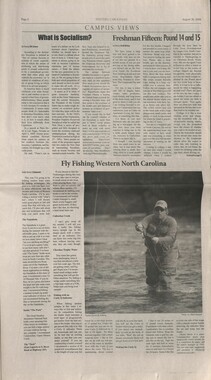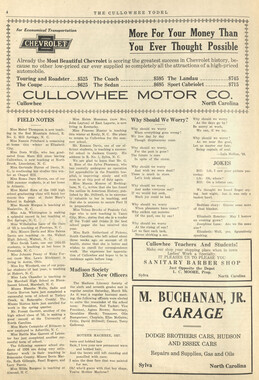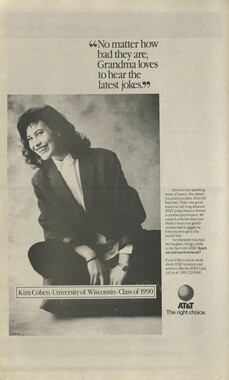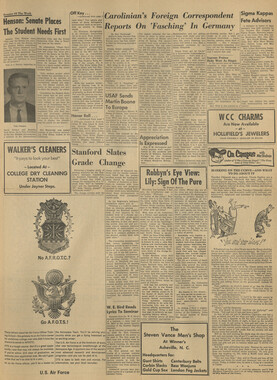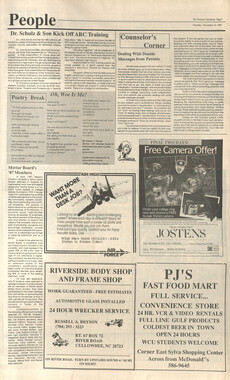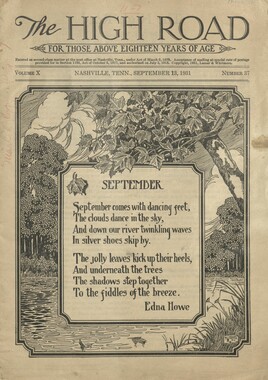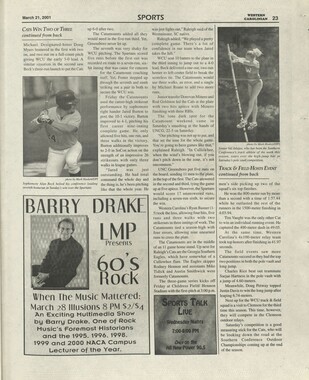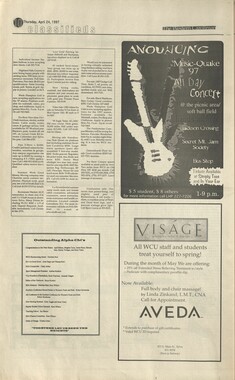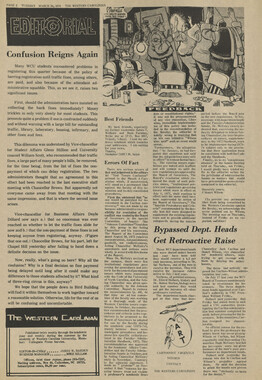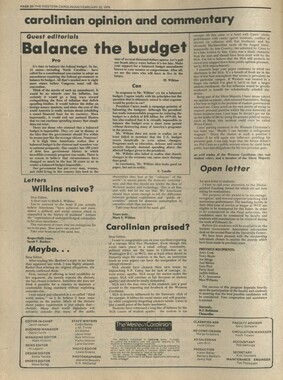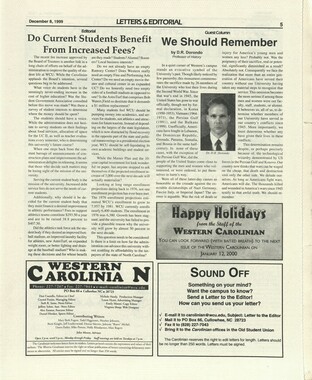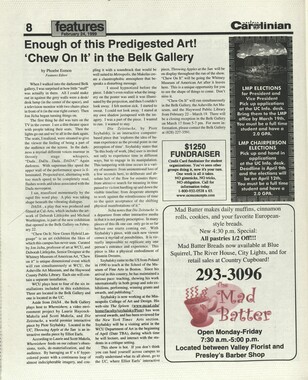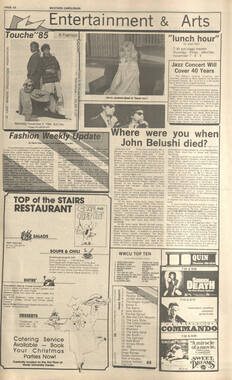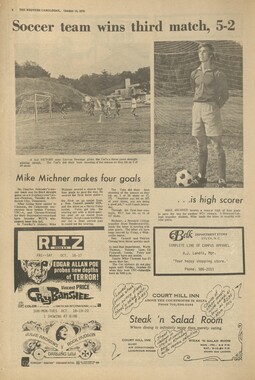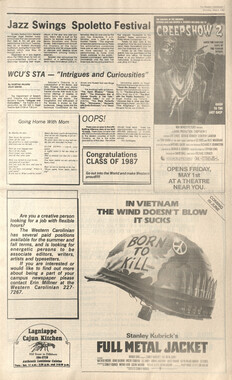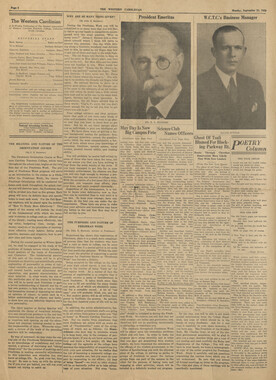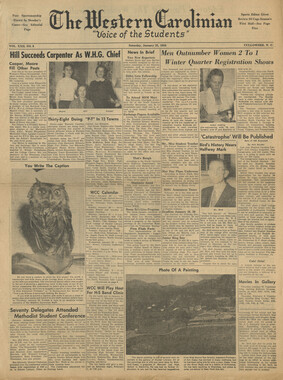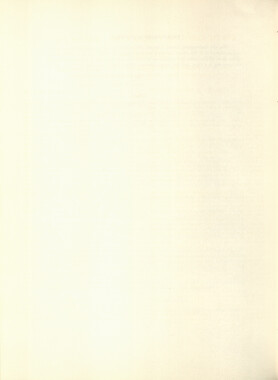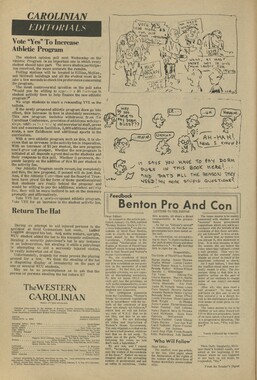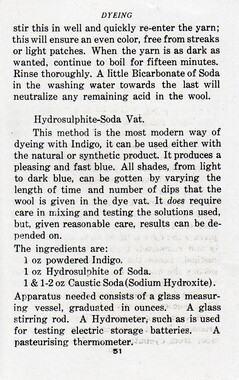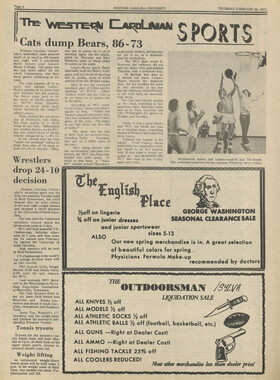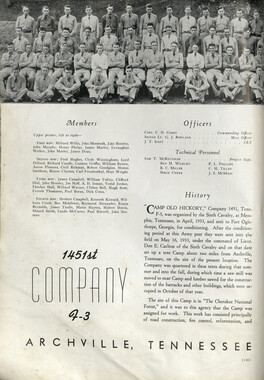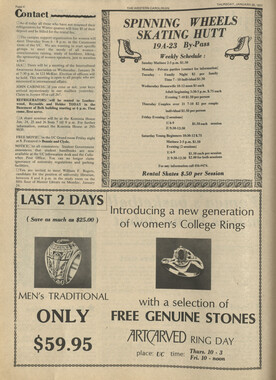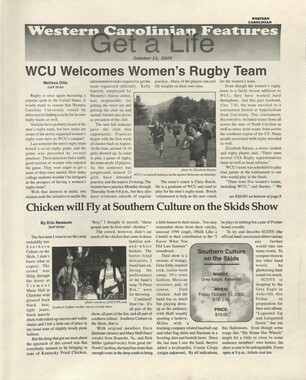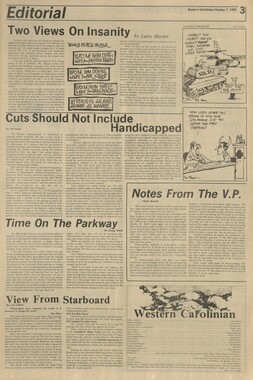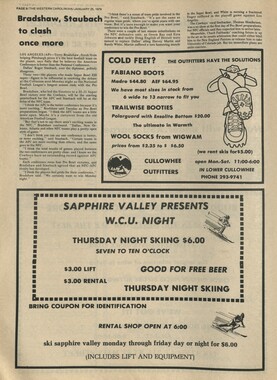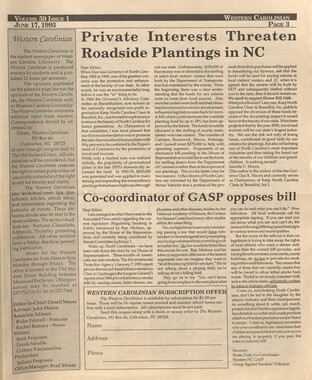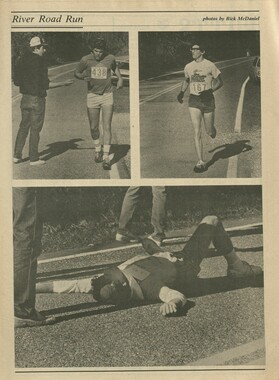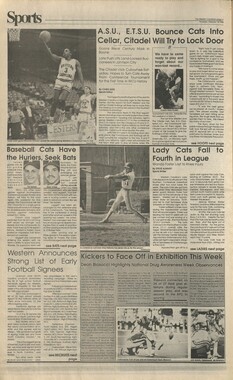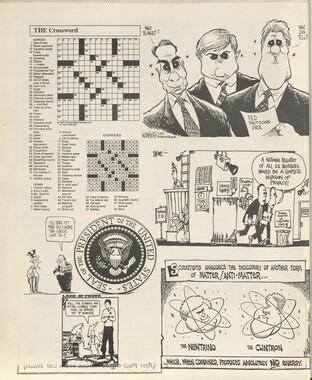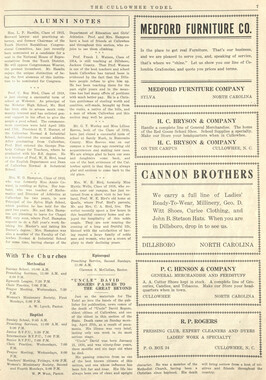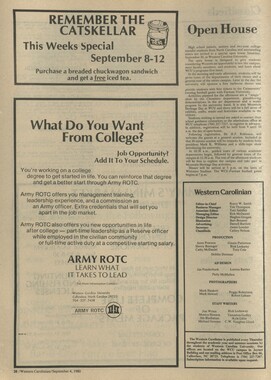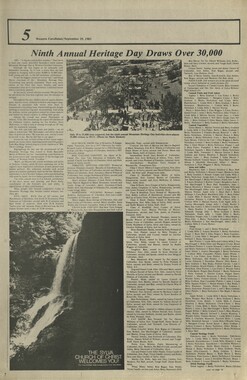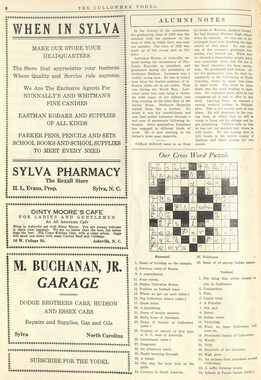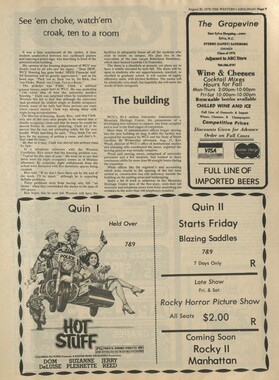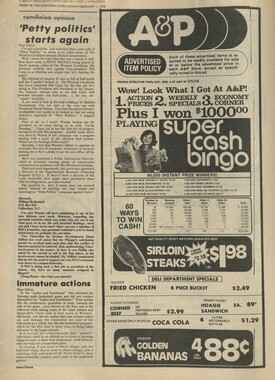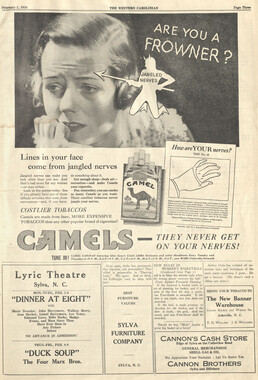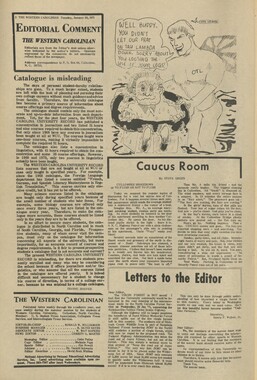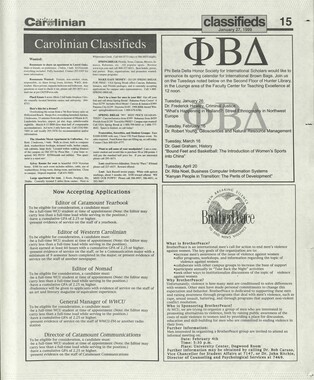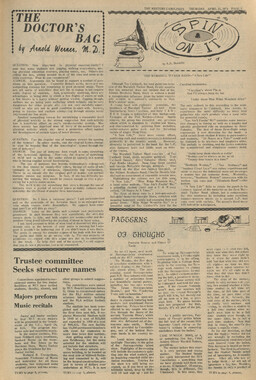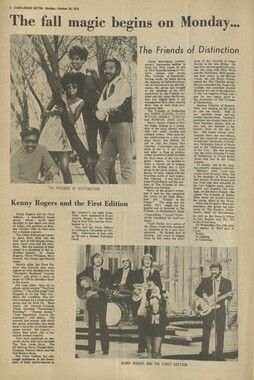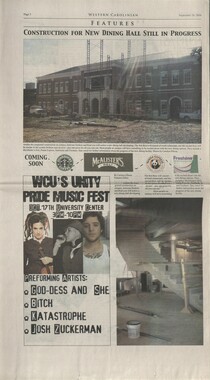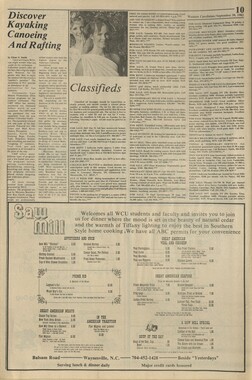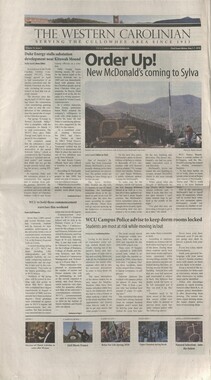Western Carolina University (21)
View all
- Canton Champion Fibre Company (2308)
- Cherokee Traditions (291)
- Civil War in Southern Appalachia (165)
- Craft Revival (1942)
- George Masa Collection (137)
- Great Smoky Mountains - A Park for America (3080)
- Highlights from Western Carolina University (422)
- Horace Kephart (973)
- Journeys Through Jackson (159)
- LGBTQIA+ Archive of Jackson County (89)
- Oral Histories of Western North Carolina (318)
- Picturing Appalachia (6617)
- Stories of Mountain Folk (413)
- Travel Western North Carolina (153)
- Western Carolina University Fine Art Museum Vitreograph Collection (129)
- Western Carolina University Herbarium (92)
- Western Carolina University: Making Memories (738)
- Western Carolina University Publications (2491)
- Western Carolina University Restricted Electronic Theses and Dissertations (146)
- Western North Carolina Regional Maps (71)
- World War II in Southern Appalachia (131)
University of North Carolina Asheville (6)
View all
- Allanstand Cottage Industries (62)
- Appalachian National Park Association (53)
- Bennett, Kelly, 1890-1974 (1463)
- Berry, Walter (76)
- Brasstown Carvers (40)
- Carver, George Washington, 1864?-1943 (26)
- Cathey, Joseph, 1803-1874 (1)
- Champion Fibre Company (233)
- Champion Paper and Fibre Company (297)
- Cherokee Indian Fair Association (16)
- Cherokee Language Program (22)
- Crowe, Amanda (40)
- Edmonston, Thomas Benton, 1842-1907 (7)
- Ensley, A. L. (Abraham Lincoln), 1865-1948 (275)
- Fromer, Irving Rhodes, 1913-1994 (70)
- George Butz (BFS 1907) (46)
- Goodrich, Frances Louisa (120)
- Grant, George Alexander, 1891-1964 (96)
- Heard, Marian Gladys (60)
- Kephart, Calvin, 1883-1969 (15)
- Kephart, Horace, 1862-1931 (313)
- Kephart, Laura, 1862-1954 (67)
- Laney, Gideon Thomas, 1889-1976 (439)
- Masa, George, 1881-1933 (61)
- McElhinney, William Julian, 1896-1953 (44)
- Niggli, Josephina, 1910-1983 (10)
- North Carolina Park Commission (105)
- Osborne, Kezia Stradley (9)
- Owens, Samuel Robert, 1918-1995 (11)
- Penland Weavers and Potters (36)
- Roberts, Vivienne (15)
- Roth, Albert, 1890-1974 (142)
- Schenck, Carl Alwin, 1868-1955 (1)
- Sherrill's Photography Studio (2565)
- Southern Highland Handicraft Guild (127)
- Southern Highlanders, Inc. (71)
- Stalcup, Jesse Bryson (46)
- Stearns, I. K. (213)
- Thompson, James Edward, 1880-1976 (226)
- United States. Indian Arts and Crafts Board (130)
- USFS (683)
- Vance, Zebulon Baird, 1830-1894 (1)
- Weaver, Zebulon, 1872-1948 (58)
- Western Carolina College (230)
- Western Carolina Teachers College (282)
- Western Carolina University (2008)
- Western Carolina University. Mountain Heritage Center (18)
- Whitman, Walt, 1819-1892 (10)
- Wilburn, Hiram Coleman, 1880-1967 (73)
- Williams, Isadora (3)
- Cain, Doreyl Ammons (0)
- Crittenden, Lorraine (0)
- Rhodes, Judy (0)
- Smith, Edward Clark (0)
- Appalachian Region, Southern (3032)
- Asheville (N.C.) (1945)
- Avery County (N.C.) (26)
- Blount County (Tenn.) (195)
- Buncombe County (N.C.) (1680)
- Cherokee County (N.C.) (283)
- Clay County (N.C.) (556)
- Graham County (N.C.) (238)
- Great Smoky Mountains National Park (N.C. and Tenn.) (535)
- Haywood County (N.C.) (3573)
- Henderson County (N.C.) (70)
- Jackson County (N.C.) (4925)
- Knox County (Tenn.) (35)
- Knoxville (Tenn.) (13)
- Lake Santeetlah (N.C.) (10)
- Macon County (N.C.) (421)
- Madison County (N.C.) (216)
- McDowell County (N.C.) (39)
- Mitchell County (N.C.) (135)
- Polk County (N.C.) (35)
- Qualla Boundary (982)
- Rutherford County (N.C.) (78)
- Swain County (N.C.) (2185)
- Transylvania County (N.C.) (270)
- Watauga County (N.C.) (12)
- Waynesville (N.C.) (86)
- Yancey County (N.C.) (72)
- Aerial Photographs (3)
- Aerial Views (60)
- Albums (books) (4)
- Articles (1)
- Artifacts (object Genre) (228)
- Bibliographies (1)
- Biography (general Genre) (2)
- Cards (information Artifacts) (38)
- Clippings (information Artifacts) (192)
- Copybooks (instructional Materials) (3)
- Crafts (art Genres) (622)
- Depictions (visual Works) (21)
- Design Drawings (1)
- Digital Moving Image Formats (2)
- Drawings (visual Works) (185)
- Envelopes (101)
- Exhibitions (events) (1)
- Facsimiles (reproductions) (1)
- Fiction (general Genre) (4)
- Financial Records (12)
- Fliers (printed Matter) (67)
- Glass Plate Negatives (381)
- Guidebooks (2)
- Internegatives (10)
- Interviews (823)
- Land Surveys (102)
- Letters (correspondence) (1045)
- Manuscripts (documents) (618)
- Maps (documents) (177)
- Memorandums (25)
- Minutes (administrative Records) (59)
- Negatives (photographs) (6090)
- Newsletters (1290)
- Newspapers (2)
- Notebooks (8)
- Occupation Currency (1)
- Paintings (visual Works) (1)
- Pen And Ink Drawings (1)
- Periodicals (194)
- Personal Narratives (10)
- Photographs (12977)
- Plans (maps) (1)
- Poetry (6)
- Portraits (4568)
- Postcards (329)
- Programs (documents) (181)
- Publications (documents) (2444)
- Questionnaires (65)
- Relief Prints (26)
- Sayings (literary Genre) (1)
- Scrapbooks (282)
- Sheet Music (2)
- Slides (photographs) (402)
- Songs (musical Compositions) (2)
- Sound Recordings (802)
- Specimens (92)
- Speeches (documents) (18)
- Tintypes (photographs) (8)
- Transcripts (329)
- Text Messages (0)
- A.L. Ensley Collection (275)
- Appalachian Industrial School Records (7)
- Appalachian National Park Association Records (336)
- Axley-Meroney Collection (2)
- Bayard Wootten Photograph Collection (20)
- Bethel Rural Community Organization Collection (7)
- Blumer Collection (5)
- C.W. Slagle Collection (20)
- Canton Area Historical Museum (2110)
- Carlos C. Campbell Collection (462)
- Cataloochee History Project (64)
- Cherokee Studies Collection (4)
- Daisy Dame Photograph Album (5)
- Daniel Boone VI Collection (1)
- Doris Ulmann Photograph Collection (112)
- Elizabeth H. Lasley Collection (1)
- Elizabeth Woolworth Szold Fleharty Collection (4)
- Frank Fry Collection (95)
- George Masa Collection (173)
- Gideon Laney Collection (452)
- Hazel Scarborough Collection (2)
- Hiram C. Wilburn Papers (28)
- Historic Photographs Collection (236)
- Horace Kephart Collection (861)
- Humbard Collection (33)
- Hunter and Weaver Families Collection (1)
- I. D. Blumenthal Collection (4)
- Isadora Williams Collection (4)
- Jesse Bryson Stalcup Collection (47)
- Jim Thompson Collection (224)
- John B. Battle Collection (7)
- John C. Campbell Folk School Records (80)
- John Parris Collection (6)
- Judaculla Rock project (2)
- Kelly Bennett Collection (1482)
- Love Family Papers (11)
- Major Wiley Parris Civil War Letters (3)
- Map Collection (12)
- McFee-Misemer Civil War Letters (34)
- Mountain Heritage Center Collection (4)
- Norburn - Robertson - Thomson Families Collection (44)
- Pauline Hood Collection (7)
- Pre-Guild Collection (2)
- Qualla Arts and Crafts Mutual Collection (12)
- R.A. Romanes Collection (681)
- Rosser H. Taylor Collection (1)
- Samuel Robert Owens Collection (94)
- Sara Madison Collection (144)
- Sherrill Studio Photo Collection (2558)
- Smoky Mountains Hiking Club Collection (616)
- Stories of Mountain Folk - Radio Programs (374)
- The Reporter, Western Carolina University (510)
- Venoy and Elizabeth Reed Collection (16)
- WCU Gender and Sexuality Oral History Project (36)
- WCU Mountain Heritage Center Oral Histories (25)
- WCU Oral History Collection - Mountain People, Mountain Lives (71)
- WCU Students Newspapers Collection (1923)
- Western North Carolina Tomorrow Black Oral History Project (69)
- William Williams Stringfield Collection (2)
- Zebulon Weaver Collection (109)
- African Americans (390)
- Appalachian Trail (35)
- Artisans (521)
- Cherokee art (84)
- Cherokee artists -- North Carolina (10)
- Cherokee language (21)
- Cherokee pottery (101)
- Cherokee women (208)
- Church buildings (190)
- Civilian Conservation Corps (U.S.) (111)
- College student newspapers and periodicals (2012)
- Dams (108)
- Dance (1023)
- Education (222)
- Floods (63)
- Folk music (1015)
- Forced removal, 1813-1903 (2)
- Forest conservation (220)
- Forests and forestry (1198)
- Gender nonconformity (4)
- Great Smoky Mountains National Park (N.C. and Tenn.) (181)
- Hunting (47)
- Landscape photography (25)
- Logging (122)
- Maps (83)
- Mines and mineral resources (9)
- North Carolina -- Maps (18)
- Paper industry (38)
- Postcards (255)
- Pottery (135)
- Railroad trains (72)
- Rural electrification -- North Carolina, Western (3)
- School integration -- Southern States (2)
- Segregation -- North Carolina, Western (5)
- Slavery (5)
- Sports (452)
- Storytelling (243)
- Waterfalls -- Great Smoky Mountains (N.C. and Tenn.) (66)
- Weaving -- Appalachian Region, Southern (280)
- Wood-carving -- Appalachian Region, Southern (328)
- World War, 1939-1945 (173)
Western Carolinian Volume 02 Number 05
Item
Item’s are ‘child’ level descriptions to ‘parent’ objects, (e.g. one page of a whole book).
-
-
TENTH ANNIVERSARY ISSUE WESTERN CAROLINA TEACHERS COLLEGE TENTH ANNIVERSARY ISSUE CULLOWHEE, N. C, FEBRUARY 1, 1934 WHO'S WHO AND WHY AT W.C.T.C. MISS NANCE Her name is Annie Jeannette Nance (and oh, how she hates the Annie part) ; she is the daughter of A. H. Nance, well-known Asheville textile man, and was born in Greensboro, where she lived until she was four. Her father is a stern Methodist, and it was in a strict Wesleyan home that she received her early training. Miss Nance graduated from David Millard High School in Asheville, and then attended Greensboro College, finishing there in 1926. While at G. C. Miss Nance was President of the Student Body and was recognized as the campus leader. Dr. Turrentine, President of Greensboro College, thinks she is one of the finest people ever to have graduated from the institution of which he is head. She received her Master's degree from Duke University in 1932, having majored in French and minored in history. At Duke she made outstanding grades, rating Kappa Delta Phi, and honorary educational fraternity whose entrance requirements are extremely high. She taught for a year in the Buncombe County Schools and last year she had a position at New Bern High. And now some little personal things about her: She's a member of the Methodist church (she had to be!); she is extremely neat, her room never being the least bit disorderly (she has two waste baskets). She enjoys reading the "Reader's Digest," especially the Patter section. Red is her favorite color (haven't you noticed those red dresses?), and oranges, grapefruit and Jlershey kisses — please note the liershey—are her favorite foods. Now, would you call kisses a food, Miss Nance? She takes excellent care of her complexion—I'm not sure whether she uses Palmolive or, like Janet Gaynor, prefers Camay—but her hair just won't curl; perhaps that is why tall men always fall for her. You know, it is the scrawny type who prefer ringlets and frizzes. She brushes her teeth before and aftei each meal; in fact, she bushes them so much that the dentist has warned her the enamel is fast wearing away. Being very much afraid of germs, she is afraid her destiny- will be death. Poor woman, she has so much in common with the rest of mankind 1 Miss Nance is 100% for Franklin Delano Roosevelt, the NRA, Duke University, the Blue Devil football tefem, and And now for a closing quotation "She can take a $1.98 dress and look like the Queen there you hav< Nance! of Sheba." And Annie Jeannette TILSON FLEETWOOD Barrow Tilson Fleetwood, the son of Mrs. B. A. Fleetwood of Mars Hill, N. C, was born in Perquianaus County, N. C, March 22, 1911. He moved to Mars Hill at the age of thirteen, graduated from Mars Hill High School in 1928, and from Mars Hill College in 1930. Mr. Fleetwood's childhood desire was to be an engineer, but "fate," he said, "turned this to teaching." Mr. Fleetwood says, "In order that pupils may be better fitted for the task ahead, athletics and a literary education should go hand in hand. One should not be sacrificed at the expense of the other. A strong mind in a strong body should be the motto of every true American." In regard to teaching, Mr. Fleetwood has the impression that the teacher should teach the pupils to THINK, or to impress upon them the significance of thinking through the problems that arise every day. Mr. Fleetwood's philosophy as to training thinkers is good. He states: "There are too many Americans who let others think for them. If I can teach my pupils to think for themselves, I don't care whether they learn a fact from any text-book. If this is practiced they will have a desire for knowledge and it will not be forced upon them." Mr. Fleetwood entered W. C. T. C. in the fall of 1932 as a Junior, and has become a real leader on the campus. He is thought by some to be a politician and he accepts this whole-heartedly, attributing it to ' edity. He says he inherited radicalism from both sides of his family, argument from his father's side and determination from his mother's. Mr. Fleetwood is Vice-iPresident of the Senate and Student Body, •'President of the Journalism Club, and Councilor or legal adviser of thi Freshman boys. He is one of oui intercollegiate debaters who made a letter in debating last year. Mr. Fleetwood has a host of friends on the campus who wish him success in his future undertakings. He has proved himself a leader among his fellow classmates and has a deep sense of appreciation for the college and faculty. We feel assured that Mr. Fleetwood will be successful in the teaching profession. He has tht support of the entire student body and faculty of Western Caroli Teachers College. TEACHERS COLLEGE OWNS INTERESTING COLLECTION The museum of the Western Carolina Teachers College at Cullowhee is filled with many interesting relics of North Carolina history. Among the most prized possessions of the museum is an oldi violin which once belonged to Zebulon B. Vance, ruddy mountaineer who gained fame as Governor of North Carolina during the Civil War, and was later rewarded with a seat in the United States Senate. In the museum are numerous relics of Indian life during the Colonial period of the state. One of the most interesting is an old rifle with which, legend says, a Cherokee chief named Tsali was executed for his tactics during the eighteenth century. The rifle is believed to have been made during the eighteenth century, and is of large bore evidently designed for the hunting of deer, bear and other game with which the western section in those days was filled. An Indian peace pipe of beautiful and intricate design which was once the property of the college is now on display in the North American Indian Museum in New York City. The pipe was carved from steatite in the form of a bird, and is one of the few specimens of its type in the countr Another relic of historical significance is the collection of the minute books of the Yellow Hill Indi; Country Council, held more than half century ago. Excavation work is now under way at an old Indian mound neat the college, and it is believed effort.' will be made to secure additional relics to add to the museum's collection. Lack of funds has caused the college to lose many mementos of the early days of the state of North Carolina. OUR ALUMNI I OUR CAMPUS Mrs. Elizabeth Moody Allen ('27) is teaching first grade in the Dills- bo 10 school. Mrs. Fannie Dills Payne ('26) is teaching in the Canton public schools. Mrs. Payne was one of the first to bscribe to the Western Carolinian this year. Mrs. Opal Reeves Howard ('26) has been attending the training school for unemployed teachers. Mrs. Howard was taking special work in the nursery school class. She plans to conduct the nursery school in Haywood County. Mrs. Annie Brown Felts ('28) is teaching fifth grade in the school at Spruce Pine, N. C. Mrs. Felts is the daughter of Prof. Frank H. Brown ('98) who is head of the Chemistry Department of the college. Mrs. Lula McHan Freeman ('28) is teaching first grade in the Bryson City School. Mrs. Freeman was a recent visitor on the campus and made plans to return the latter part of the spring quarter to work her degree. Miss Miriam Stillwell ('28) is teaching in the high school at Almond, N. C. Miss Stillwell secured her B. S. degree from Peabody College in 1930. Mr. Samuel Perry Hyatt ('30) is teaching in the school at Glenville, N. C. Mr. Hyatt has been located there for the past two years. Miss Ina Henry ('31) and Mis: Gladys Pannell ('32) both of Franklin, N. C, were recent visitors or the campus. They plan to enter college the spring quarter. Mr. Pearle Kitchens ('31) i: teaching at Elf High School. Mr Kitchens was one of our outstanding athletes and was a member of thi team that won the Southeastern Junior College Basketball Championship in 1930. Mr. Kitchens is coach of the Elf High School basketball team, and indications from the game played with the Junior Catamounts recently show that he is developing an excellent team. Mr. J. Walter Moore ('32) is principal of the Elf High School. Mr. John Roy M. Porter ('31) is principal of the Bryson City Elementary Schools. Mr. Porter is also chairman of the Swain County Al umni Chapter. Among the recent weddings an nounced are those of Mr. Guy Sutton ('34) to Miss Jimmie Tucker ('30), and of Miss Dessie Parki ('31) to Mr. Ronald Eller. SENATE NEWS At the end of the fall quarter there were three vacancies in the personnel of the Senate. An election was held and Ruth Burch, Rachael R. Williams, and Jack Williams were elected to fill the unexpired terms of Raymond Dalrymple, Dorothy Neal, and Lawrence Barnhill. (Pity the Secretary—there are only three Williamses in the Senate.) The Senate has acquired some stationery. It is the standard college paper with the names of the Senators. Naturally, the Senators are quite proud of it. The organizations on the campus have turned their constitutions in to the Senate for approval. These constitutions will be carefully checked, and charters will be granted to those meeting standard requirements. This power to grant charters was delegated the Senate by the Executive Committee when the Senate constitution was framed. The campus proper of Western Carolina Teachers College covers an area of about twenty-five acres. It extends from the children's playground down below the training school over to the home of Mr. El- iott. The elevation of this land is one of the remarkable features of the campus. There is the distance of about two hundred feet from the lowest point to the highest. The as- rent from the power plant to Joyner s so great that more than one build- ng of its size would have to be placed on top the power house to make it as Joyner. This would! be true of Joyner Building and Reuben Robertson Hall. Dr. Hunter says he knows of no other college campus in America which has such outstanding features in elevation as has ours. The chief buildings on the campus are: Joyner Building, which is the Administration; Madison Build- ng, which includes the Gymnasum nd music rooms; the Training School, which is the graded school and also contains the Home Economic rooms; Moore Dormitory, Davies Hall, and Reuben Robertson Hall, where the students and some of the faculty memjv/,.j live; and the steam plant, which nq only furnishes pow er to the colleg< and community, but also contains the Science Laborato- The residence of Dr. Hunter, President of the college, is also located on the campus. It is a white structure which sits back from thi road and nestles among an abundance of trees and shrubs. The large variety of trees and shrubs on our campus is quite markable. We have a number of oak trees: Spanish Oak, Water Oak, Red and White oak. We have hickory and both pink and white dogwood, sourwood, blackgum, sycamore and catalpa. Among the evergreens arc the White Pine, Black Pine, Cedar, Norway Spruce, Blue Spruce, Silver Spruce, Deodora Cedar, Japanese Juniper and Arborvitae. There are three varieties of Rhododendron, and there is an abundance of Mountain Laurel. There are about three thousand vines and shrubs on the campus. There are about twenty-five or thirty different kinds of shrubs on the campus. This is one of the few spots where Trailing Arbutus is found. The Blue Violet is a well known flower here. All of these natural beauties make Cullowhee one of the most beautiful places that exists. Truly, it is "in the woods," and with the flowers, the trees, and the birds, it is certainly a lovely spot. Frances Leatherwood. BASKETBALL INSTITUTE Last Saturday in institute i: Women's basketball was held here at the invitation o Aiss Alice Benton, head of the i'. .'<-. Department. Members of the Board of Examiners of the North Carolina Board of Officials present were: Miss Augusta Barnette, Chm., Asheville; Mrs. Piercy Carter, Asheville; Miss Thelma Howell, Cullowhee. Alice Tart and Miss Alice Benton are members of the N. C. Board of Officials in Women's Basketball. This means they are approved referees. Grayson Cope is an associate member since men are not admitted to full membership. Grayson Cope is also an approved referee. New Rules In Women's Basketball Thelma Howell, Board of Examiners N. C. Board of Officials for Women's Basketball The most important changes in the rules for women's basketball for year are: (1) the new guarding and! (2) the points left to the discretion of the referee. The rules and points of last year which prob- iblly need emphasizing in this article re: (1) The center toss, (2) Blowing of officials' whistles, (3) Fouls committed against opponent who is in the act of throwing for basket. New Guarding Rule Previous to this year, it was pos- ible for a player to overguard an opponent by failing to keep the arms in a horizontal plane and to overguard the ball. Under the present rules (Rule 4, Division F, Section 1) the ball may be overguarded, but the only way an opponent may be over- guarded is by "overguarding with both arms, when opponent is at a corner where two boundary walls Prominent coaches throughout the country have given wide publicity to the effect of the new guarding rule. It undoubtedly forces changes in the playing, the coaching, and the refereeing. A guard may now force a forward to pass the ball instead of trying for basket, and to tie up a forward so that she is forced to pass the ball blindly. On the other hand, fouling on the part of the guard is increased. More personal fouls are being committed, and since, in wom- sketball, only three are allowed, guards are fouling out. Points Left to Discretion of Referee 1. If in the discretion of the referee the personal contact of two players cannot be avoided, the personal contact shall not be penalized unless roughness has resulted. 2. In making decisions relative to "traveling with the ball," due allowance must be made for player who catches the ball while running." The player must get rid of the ball in "two steps distance." 3- °When a player thinks she has tied a ball with an opponent and keeps her hands on it, but, in the Referee's or Umpire's judgment, the other player gained possession of it first, the Referee or Umpire shall award the ball to that player at the nearest sideline point out-of-bounds." This rule has been made in order to lessen the stopping of the game by constant calling of the balls. In effect, it will mean that officials must hold their whistles and give players time to withdraw their hands where the tie ball has not been secured as called for in Rule 10, Division D, Section 1. The responsibility placed on the Referee is obvious. The Center Toss Where the count is divided into three divisions, the centers stand with both feet in half of center circle nearest opponent's goal. In the two division game, the centers stand with both feet in half of center circle nearest own goal. Blowing of Officials' Whistles This rule seems to give trouble because spectators expect the men's rules to apply. In the Guidebook for 1933-34 (p. 15), the National Rules Committee is suggesting that "on all toss-balls, except where "Time-In" needs to be taken, that the whistles be sounded so that only the players involved need hear. Coaches are also asked to train players to retrieve balls without waiting to be told by the official. In such cases, the offi- (Continued on Page 3)
Object
Object’s are ‘parent’ level descriptions to ‘children’ items, (e.g. a book with pages).
-
The Western Carolinian is Western Carolina University’s student-run newspaper. The paper was published as the Cullowhee Yodel from 1924 to 1931 before changing its name to The Western Carolinian in 1933.
-


